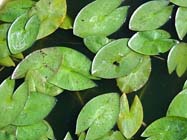Aquatic, woody plants hold greatest invasive threat to China
 Washington, May 2 : Researchers at the University of Zurich in Switzerland and Fudan University in Shanghai, China, have warned that woody and aquatic plants pose the greatest invasive threat to China.
Washington, May 2 : Researchers at the University of Zurich in Switzerland and Fudan University in Shanghai, China, have warned that woody and aquatic plants pose the greatest invasive threat to China.
China presently has fewer invasive woody plants than the United States, but a comparison suggests that China’s potential for invasion by non-native trees and shrubs is high.
Researchers studied the factors linked to alien plant species invasions and compared the history of alien plant species introductions in the United States and China, countries of similar size and latitudinal span.
They assumed that China has relatively few invasive plant species because the country has remained largely isolated from international trade until recent decades, unlike the United States.
As Chinese economic development proceeds rapidly, however, so too may the number of invasions of alien species.
Of the plants that are already invasive in China, annuals are more common than shrubs, trees, climbers, and aquatic plants.
These less common types, which include some of the world’s most pernicious invaders, could be poised for spread in the future.
The researchers found that 20 familiar plant species, including elephant grass (Pennisetum purpureum), native to Africa, and pampas grass (Cortaderia selloana), native to South America, are common invasive species in the United States and elsewhere but have not yet been reported as invasive in China, which may indicate that China is vulnerable to future infestations.
However, species that have already spread have not been adequately controlled.
Researchers concluded that rapid economic development and strengthening international trade in China will have a twofold effect: new species will be introduced into the country at an ever-increasing rate, and greater reliance on railway transportation will cause habitat degradation, providing alien plants with viable environments for rapid range expansion.
The insist on the need for immediate management of invasives in China, as well as other parts of Asia, to keep this momentum from gathering speed and causing further problems for poor farmers who live on marginal land.
Researchers said that any developing country benefiting from economic expansion and international trade should be wary of the greater potential for invasion of alien plant species.
They suggest that China and its neighbours should act to develop and maintain an efficient system of invasive species control now, before existing invaders begin their rapid expansion and before new invaders are introduced.
Such a program should involve a complete inventory of naturalized plant species in China to identify potentially invasive species, protocols for the introduction of alien species into China, a quick-reference guide to the invaders that require more intensive monitoring, and greater international cooperation in research on invasive species and border protection.
The study is publsihed in the May 2008 issue of BioScience. (ANI)